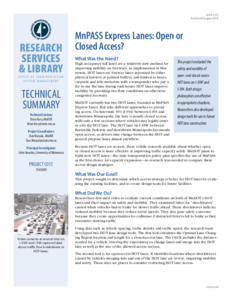Displaying results 1 - 8 of 8
Evaluation of the Effect of MnPASS Lane Design on Mobility and Safety
Date Created
2014
Report Number
2014-23
Description
MnPASS Modeling and Pricing Algorithm Enhancement
Date Created
2015
Report Number
2015-22
Description








